Economic Potential of Algae Biostimulant for Sustainable Agriculture in the Baltic Sea Region: Impact of Furcellaria lumbricalis Digestate Extract on Basil Growth Promotion
Abstract
1. Introduction
- To conduct an analysis of the scientific literature (scoping review) on the potential of Furcellaria lumbricalis as an algae biostimulant in agriculture, collecting information on its composition, biomass availability and economic value in the Baltic Sea region and analysing gross cover data and international research results.
- Design and implement the experimental part:
- to carry out an anaerobic fermentation process for the production of algae digestate of Furcellaria lumbricalis under controlled conditions;
- to develop an automated environmental control system for growing crops under controlled conditions;
- to conduct experimental studies with different concentrations of algae extract (0%, 3%, 6%, 12%).
- To analyse the results obtained on the increase in green mass depending on the applied extract concentration and to draw conclusions on the effectiveness of the application of algae extract in sustainable agriculture.
2. Materials and Methods
2.1. Literature Review and Data Analysis
2.2. Economic Analysis Methodology
2.3. Preparation of the Digestate
2.4. Plant-Growing Equipment
2.5. Plant Test Methodology
3. Results
3.1. The Potential of Algae Biostimulants for the Development of Sustainable Agriculture
3.1.1. Effects of Algae Extracts on Crop Yield
- In Poland: cereals and potatoes;
- In Denmark: cereals and fodder crops;
- In Sweden and Finland: cereals and rapeseed;
- In the Baltic countries: cereals, rapeseed and legumes.
3.1.2. Anaerobic Digestate Production
3.1.3. Characterisation of the Chemical Composition and Biostimulant Properties of Algae Digestate Extract
3.1.4. Crop Test Results
- First experiment.
- Second experiment.
3.2. Availability of Algae Biomass and Technological Aspects
4. Discussion
- The experimental results indicate that 3% Furcellaria lumbricalis digestate extract significantly enhances basil (Ocimum basilicum) growth, increasing green mass by 52.7% to 85.4%. These results are very promising and indicate the high effectiveness of the extract. However, it was observed that a higher concentration (6%) demonstrated lower effectiveness, highlighting the need for the careful optimisation of concentration depending on the crop and environmental conditions. The study demonstrates the economic potential of algal biostimulants in Latvian agriculture, with projections of gross profit increases of 10–20% for different crops. Using the Gross Profit Calculation Tool (2023 version) developed by the Latvian Rural Advisory and Education Centre (LRAC) and yield increase estimates derived from the peer-reviewed literature, it was calculated that gross profit could increase by 357–476 EUR/ha for potatoes and 80–107 EUR/ha for rapeseed (see Section 2.2 for detailed methodology and Table 2 for comprehensive results). These estimates take into account both yield improvements and additional costs associated with the use of biostimulants. However, it should be noted that these calculations are based on theoretical modelling and laboratory experiments and that practical results may vary depending on factors such as climatic conditions and soil characteristics.
- Furcellaria lumbricalis is a significant biomass resource in the Baltic Sea region, with different distributions in different countries. The study reveals that Estonia has the most significant biomass available, with 150,000 tonnes of wet weight per year, followed by Latvia with 20,000–30,000 tonnes per year. This resource base offers substantial development opportunities in the production of biostimulants and biorefining.
- The analysis of the enzyme composition (Table 4) provides valuable preliminary information on the potential nutritional value of the Furcellaria lumbricalis digestate. At the same time, it should be noted that these results are preliminary characterisations and not definitive proof of the efficacy of the biostimulant. The relatively stable pH and significant organic matter content suggest potential soil replenishing properties, while the presence of various macro- and micro-nutrients suggests possible nutritional benefits. However, in order to properly contextualise these findings, it is important to carry out comparative studies with established commercial biostimulants. Future studies should investigate not only the nutrient composition but also their bioavailability, the presence of plant growth-promoting compounds, such as phytohormones and signalling molecules, and possible synergistic effects between components. Particular attention should be paid to the relatively high calcium content (1.68%), as calcium plays a crucial role in cell wall formation and in signalling the plant stress response.
Author Contributions
Funding
Institutional Review Board Statement
Informed Consent Statement
Data Availability Statement
Conflicts of Interest
References
- Drobek, M.; Frąc, M.; Cybulska, J. Plant biostimulants: Importance of the quality and yield of horticultural crops and the improvement of plant tolerance to abiotic stress—A review. Agronomy 2019, 9, 335. [Google Scholar] [CrossRef]
- European Commission. Farm to Fork Strategy—For a Fair, Healthy, and Environmentally-Friendly Food System. Available online: https://food.ec.europa.eu/horizontal-topics/farm-fork-strategy_en (accessed on 20 December 2024).
- Nanda, S.; Kumar, G.; Hussain, S. Utilization of seaweed-based biostimulants in improving plant and soil health: Current updates and future prospective. Int. J. Environ. Sci. Technol. 2022, 19, 12839–12852. [Google Scholar] [CrossRef]
- Carillo, P.; Colla, G.; Fusco, G.M.; Dell’Aversana, E.; El-Nakhel, C.; Giordano, M.; Pannico, A.; Cozzolino, E.; Mori, M.; Reynaud, H.; et al. Morphological and Physiological Responses Induced by Protein Hydrolysate-Based Biostimulant and Nitrogen Rates in Greenhouse Spinach. Agronomy 2019, 9, 450. [Google Scholar] [CrossRef]
- Hussein, H.-A.A.; Alshammari, S.O.; Kenawy, S.K.M.; Elkady, F.M.; Badawy, A.A. Grain-Priming with L-Arginine Improves the Growth Performance of Wheat (Triticum aestivum L.) Plants under Drought Stress. Plants 2022, 11, 1219. [Google Scholar] [CrossRef] [PubMed]
- Ali, O.; Ramsubhag, A.; Jayaraman, J. Biostimulant Properties of Seaweed Extracts in Plants: Implications towards Sustainable Crop Production. Plants 2021, 10, 531. [Google Scholar] [CrossRef]
- Lähteenmäki-Uutela, A.; Rahikainen, M.; Camarena-Gómez, M.T.; Piiparinen, J.; Spilling, K.; Yang, B. European Union legislation on macroalgae products. Aquacult. Int. 2021, 29, 487–509. [Google Scholar] [CrossRef]
- Ronga, D.; Biazzi, E.; Parati, K.; Carminati, D.; Carminati, E.; Tava, A. Microalgal biostimulants and biofertilisers in crop productions. Agronomy 2019, 9, 192. [Google Scholar] [CrossRef]
- Sanchez-Quintero, A.; Leca, M.-A.; Regnault, L. Innovative production of microalgae-based plant biostimulants from waste streams for a sustainable agriculture. In Proceedings of the Young Algaeneers Symposium (YAS 2023), Faro, Portugal, 23–25 May 2023. [Google Scholar]
- Rouphael, Y.; Colla, G. Synergistic Biostimulatory Action: Designing the Next Generation of Plant Biostimulants for Sustainable Agriculture. Front. Plant Sci. 2018, 9, 1655. [Google Scholar] [CrossRef]
- Van Oosten, M.J.; Pepe, O.; De Pascale, S.; Silletti, S.; Maggio, A. The role of biostimulants and bioeffectors as alleviators of abiotic stress in crop plants. Chem. Biol. Technol. Agric. 2017, 4, 5. [Google Scholar] [CrossRef]
- Eurostat. Agricultural Production-Crops. Available online: https://ec.europa.eu/eurostat/statistics-explained/index.php?title=Agricultural_production_-_crops (accessed on 20 December 2024).
- Ministry of Agriculture. Latvijas Lauksaimniecība 2021; Zemkopības Ministrija: Rīga, Latvia, 2021.
- Sharma, H.S.S.; Fleming, C.; Selby, C.; Rao, J.R.; Martin, T. Plant biostimulants: A review on the processing of macroalgae and use of extracts for crop management to reduce abiotic and biotic stresses. J. Appl. Phycol. 2014, 26, 465–490. [Google Scholar]
- Boutahiri, S.; Benrkia, R.; Tembeni, B.; Idowu, O.E.; Olatunji, O.J. Effect of Biostimulants on the Chemical Profile of Food Crops under Normal and Abiotic Stress Conditions. Curr. Plant Biol. 2024, 40, 100410. [Google Scholar] [CrossRef]
- Hamouda, M.M.; Saad-Allah, K.M.; Gad, D. Potential of Seaweed Extract on Growth, Physiological, Cytological and Biochemical Parameters of Wheat (Triticum aestivum L.) Seedlings. J. Soil. Sci. Plant Nutr. 2022, 22, 13. [Google Scholar] [CrossRef]
- Rouphael, Y.; Colla, G.; Giordano, M.; El-Nakhel, C.; Kyriacou, M.C.; De Pascale, S. Foliar Applications of a Legume-derived Protein Hydrolysate Elicit Dose-dependent Increases of Growth, Leaf Mineral Composition, Yield and Fruit Quality in Two Greenhouse Tomato Cultivars. Sci. Hortic. 2017, 226, 353–360. [Google Scholar] [CrossRef]
- Bartucca, M.L.; Cerri, M.; Del Buono, D.; Forni, C. Use of Biostimulants as a New Approach for the Phytoremediation of Contaminated Soils: Promises and Challenges. Plants 2022, 11, 1946. [Google Scholar] [CrossRef]
- Zarzecka, K.; Gugała, M. The effect of herbicides and biostimulants on sugars content in potato tubers. Plant Soil. Environ. 2018, 64, 82–87. [Google Scholar] [CrossRef]
- García-González, J.; Sommerfeld, M. Biofertilizer and biostimulant properties of the microalga Acutodesmus dimorphus. J. Appl. Phycol. 2016, 28, 1051–1061. [Google Scholar]
- Khan, W.; Rayirath, U.P.; Subramanian, S.; Jithesh, M.N.; Rayorath, P.; Hodges, D.M.; Critchley, A.T.; Craigie, J.S.; Norrie, J.; Prithiviraj, B. Seaweed extracts as biostimulants of plant growth and development. J. Plant Growth Regul. 2009, 28, 386–399. [Google Scholar] [CrossRef]
- Calvo, P.; Nelson, L.; Kloepper, J.W. Agricultural uses of plant biostimulants. Plant Soil. 2014, 383, 3–41. [Google Scholar] [CrossRef]
- Battacharyya, D.; Babgohari, M.Z.; Rathor, P.; Prithiviraj, B. Seaweed extracts as biostimulants in horticulture. Sci. Hortic. 2015, 196, 39–48. [Google Scholar]
- Craigie, J.S. Seaweed extract stimuli in plant science and agriculture. J. Appl. Phycol. 2011, 23, 371–393. [Google Scholar] [CrossRef]
- Win, T.T.; Barone, G.D.; Secundo, F.; Fu, P. Algal Biofertilizers and Plant Growth Stimulants for Sustainable Agriculture. Ind. Biotechnol. 2018, 14, 203–211. [Google Scholar] [CrossRef]
- Rathore, S.S.; Chaudhary, D.; Boricha, G.; Ghosh, A.; Bhatt, B.; Zodape, S.; Patolia, J. Effect of seaweed extract on the growth, yield and nutrient uptake of soybean (Glycine max) under rainfed conditions. S. Afr. J. Bot. 2009, 75, 351–355. [Google Scholar] [CrossRef]
- Arias, A.; Feijoo, G.; Moreira, M.T. Macroalgae as a sustainable biostimulant for crop production according to techno-economic and environmental criteria. Sustain. Prod. Consum. 2024, 48, 169–180. [Google Scholar] [CrossRef]
- du Jardin, P. Plant biostimulants: Definition, concept, main categories and regulation. Sci. Hortic. 2015, 196, 3–14. [Google Scholar] [CrossRef]
- Rouphael, Y.; Cardarelli, M.; Bonini, P.; Colla, G. Synergistic action of a microbial-based biostimulant and a plant derived-protein hydrolysate enhances lettuce tolerance to alkalinity and salinity. Front. Plant Sci. 2018, 9, 1870. [Google Scholar] [CrossRef]
- Yakhin, O.I.; Lubyanov, A.A.; Yakhin, I.A.; Brown, P.H. Biostimulants in plant science: A global perspective. Front. Plant Sci. 2017, 7, 2049. [Google Scholar] [CrossRef]
- Kholssi, R.; Lougraimzi, H.; Grina, F.; Lorentz, J.; Silva, I.; Castaño Sánchez, O.; Marks, E.A.N. Green Agriculture: A Review of the Application of Micro- and Macroalgae and Their Impact on Crop Production on Soil Quality. J. Soil. Sci. Plant Nutr. 2022, 22, 4627–4641. [Google Scholar] [CrossRef]
- Pereira, R.V.; Filgueiras, C.C.; Dória, J.; Peñaflor, M.F.G.V.; Willett, D.S. The Effects of Biostimulants on Induced Plant Defense. Front. Agron. 2021, 3, 630596. [Google Scholar] [CrossRef]
- Chen, D.; Zhou, W.; Yang, J.; Ao, J.; Huang, Y.; Shen, D.; Jiang, Y.; Huang, Z.; Shen, H. Effects of Seaweed Extracts on the Growth, Physiological Activity, Cane Yield and Sucrose Content of Sugarcane in China. Agronomy 2021, 11, 1234. [Google Scholar] [CrossRef]
- Tritean, N.; Trică, B.; Dima, Ş.-O.; Capră, L.; Gabor, R.-A.; Cimpean, A.; Oancea, F.; Constantinescu-Aruxandei, D. Mechanistic Insights into the Plant Biostimulant Activity of a Novel Formulation Based on Rice Husk Nanobiosilica Embedded in a Seed Coating Alginate Film. Front. Plant Sci. 2024, 15, 1349573. [Google Scholar] [CrossRef]
- Mutlu-Durak, H.; Arikan-Algul, Y.; Bayram, E.; Haznedaroglu, B.Z.; Kutman, U.B.; Kutman, B.Y. Various Extracts of the Brown Seaweed Cystoseira barbata with Different Compositions Exert Biostimulant Effects on Seedling Growth of Wheat. Physiol. Plant. 2024, 176, e14503. [Google Scholar] [CrossRef] [PubMed]
- Bulgari, R.; Cocetta, G.; Trivellini, A.; Vernieri, P.; Ferrante, A. Biostimulants and crop responses: A review. Biol. Agric. Hortic. 2014, 31, 1–17. [Google Scholar] [CrossRef]
- Latvian Rural Advisory and Training Centre (LLKC). Gross Margins. Available online: https://new.llkc.lv/lv/nozares/ekonomika/bruto-segumi (accessed on 15 December 2024).
- Zalidis, G.; Stamatiadis, S.I.; Takavakoglou, V.; Eskridge, K.; Misopolinos, N. Impacts of Agricultural Practices on Soil and Water Quality in the Mediterranean Region and Proposed Assessment Methodology. Agric. Ecosyst. Environ. 2002, 88, 137–146. [Google Scholar] [CrossRef]
- Castiglione, A.M.; Mannino, G.; Contartese, V.; Bertea, C.M.; Ertani, A. Microbial Biostimulants as Response to Modern Agriculture Needs: Composition, Role and Application of These Innovative Products. Plants 2021, 10, 1533. [Google Scholar] [CrossRef]
- HELCOM. Baltic Sea Action Plan Implementation Report; Helsinki Commission: Helsinki, Finland, 2021.
- Chwastowska-Siwiecka, I.; Micinski, J. Characteristics and Applications of Marine Algae in the Agri-Food Industry and Animal Nutrition. J. Elem. 2023, 28, 855–874. [Google Scholar] [CrossRef]
- Siddhnath; Surasani, V.K.R.; Singh, A.; Singh, S.M.; Hauzoukim; Murthy, L.N.; Baraiya, K.G. Bioactive Compounds from Micro-Algae and Its Application in Foods: A Review. Discov. Food 2024, 4, 27. [Google Scholar] [CrossRef]
- Breton, É.; Juster, R.P.; Booij, L. Gender and sex in eating disorders: A narrative review of the current state of knowledge, research gaps, and recommendations. Brain Behav. 2023, 13, e2871. [Google Scholar] [CrossRef] [PubMed]
- O’Sullivan, R.; Lawlor, B.; Burns, A.; Leavey, G. Will the pandemic reframe loneliness and social isolation? Lancet Health Longev. 2021, 2, e54–e55. [Google Scholar] [CrossRef]
- ISO 10390:2021; Soil Quality—Determination of pH. International Organization for Standardization (ISO): Geneva, Switzerland, 2021.
- LVS EN 13039:2012; Soil Improvers and Growing Media—Determination of Organic Matter Content and Ash. Latvian Standards (LVS): Riga, Latvia, 2012.
- LVS EN 13040:2008; Soil Improvers and Growing Media—Sample Preparation for Chemical and Physical Tests, Determination of Dry Matter Content, Moisture Content, and Laboratory Compacted Bulk Density. Latvian Standards (LVS): Riga, Latvia, 2008.
- LVS EN 13654-1:2003; Soil Improvers and Growing Media—Determination of Nitrogen—Part 1: Modified Kjeldahl Method. Latvian Standards (LVS): Riga, Latvia, 2003.
- LVS 398:2002; Fertilizers—Determination of Phosphorus Content. Latvian Standards (LVS): Riga, Latvia, 2002.
- LVS ISO 11466:1995; Soil Quality—Extraction of Trace Elements Soluble in Aqua Regia & Water Quality—Determination of Potassium Content. Latvian Standards (LVS): Riga, Latvia, 1995.
- LVS EN ISO 7980:2000; Water Quality—Determination of Calcium and Magnesium Content by Atomic Absorption Spectrometry. Latvian Standards (LVS): Riga, Latvia, 2000.
- LVS ISO 11047:1998; Soil Quality—Determination of Trace Elements Using Flame and Electrothermal Atomic Absorption Spectrometry. Latvian Standards (LVS): Riga, Latvia, 1998.
- Stand.Method.3111B:2017; Standard Methods for the Examination of Water and Wastewater—Metals by Atomic Absorption Spectrometry. American Public Health Association (APHA): Washington, DC, USA, 2017.
- Guilayn, F.; Jimenez, J.; Rouez, M.; Crest, M.; Patureau, D. Digestate Mechanical Separation: Efficiency Profiles Based on Anaerobic Digestion Feedstock and Equipment Choice. Bioresour. Technol. 2019, 274, 180–189. [Google Scholar] [CrossRef]
- Erraji, H.; Asehraou, A.; Tallou, A.; Rokni, Y. Assessment of Biogas Production and Fertilizer Properties of Digestate from Cow Dung Using Household Biogas Digester. Biomass Convers. Biorefin. 2023, 14, 29001–29007. [Google Scholar] [CrossRef]
- Mora-Salguero, D.; Montenach, D.; Gilles, M.; Jean-Baptiste, V. Long-Term Effects of Combining Anaerobic Digestate with Other Organic Waste Products on Soil Microbial Communities. Front. Microbiol. 2024, 15, 1490034. [Google Scholar] [CrossRef]
- Guilayn, F.; Rouez, M.; Crest, M.; Patureau, D.; Jimenez, J. Valorization of Digestates from Urban or Centralized Biogas Plants: A Critical Review. Rev. Environ. Sci. Bio/Technol. 2020, 19, 419–462. [Google Scholar] [CrossRef]
- GRASS Project. Grazing Resilience and Sustainable Solutions Program Factsheet; Queensland Government: Brisbane, Australia, 2023.
- Orav-Kotta, H.; Kotta, J.; Herkül, K.; Kotta, I.; Paalme, T. Seasonal Variability in the Grazing Potential of the Invasive Amphipod Gammarus tigrinus and the Native Amphipod Gammarus salinus (Amphipoda: Crustacea) in the Northern Baltic Sea. Biol. Invasions 2009, 11, 597–608. [Google Scholar] [CrossRef]
- Weinberger, F.; Paalme, T.; Wikström, S.A. Seaweed resources of the Baltic Sea, Kattegat and German and Danish North Sea coasts. Bot. Mar. 2020, 63, 61–72. [Google Scholar] [CrossRef]
- Brion, N.; Jans, S.; Chou, L.; Rousseau, V. Nutrient Loads to the Belgian Coastal Zone. In Current Status of Eutrophication in the Belgian Coastal Zone; Rousseau, V., Lancelot, C., Cox, D., Eds.; Presses Universitaires de Bruxelles: Brussels, Belgium, 2006. [Google Scholar]
- O’Sullivan, L.; Murphy, B.; McLoughlin, P.; Duggan, P.; Lawlor, P.G.; Hughes, H.; Gardiner, G.E. Prebiotics from marine macroalgae for human and animal health applications. Mar. Drugs 2010, 8, 2038–2064. [Google Scholar] [CrossRef]
- Davis, R.; Markham, J.; Kinchin, C.; Grundl, N.; Tan, E.C.D.; Humbird, D. Process Design and Economics for the Production of Algal Biomass: Algal Biomass Production in Open Pond Systems and Processing Through Dewatering for Downstream Conversion; NREL Technical Report; National Renewable Energy Lab (NREL): Golden, CO, USA, 2024; pp. 1–128.
- Friedlingstein, P.; O’Sullivan, M.; Jones, M.W.; Andrew, R.M.; Gregor, L.; Hauck, J.; Le Quéré, C. Global Carbon Budget 2023. Earth Syst. Sci. Data 2023, 15, 5301–5369. [Google Scholar] [CrossRef]
- Prisa, D.; Fresco, R.; Jamal, A.; Saeed, M.F.; Spagnuolo, D. Exploring the Potential of Macroalgae for Sustainable Crop Production in Agriculture. Life 2024, 14, 1263. [Google Scholar] [CrossRef] [PubMed]
- Kocira, S.; Szparaga, A.; Kocira, A.; Czerwińska, E.; Wójtowicz, A.; Bronowicka-Mielniczuk, U.; Koszel, M.; Findura, P. Modeling Biometric Traits, Yield and Nutritional and Antioxidant Properties of Seeds of Three Soybean Cultivars Through the Application of Biostimulant Containing Seaweed and Amino Acids. Front. Plant Sci. 2018, 9, 388. [Google Scholar] [CrossRef]
- Di Filippo-Herrera, D.A.; Muñoz-Ochoa, M.; Hernández-Herrera, R.M.; Hernández-Carmona, G. Biostimulant activity of individual and blended seaweed extracts on the germination and growth of the mung bean. J. Appl. Phycol. 2019, 31, 2025–2037. [Google Scholar] [CrossRef]

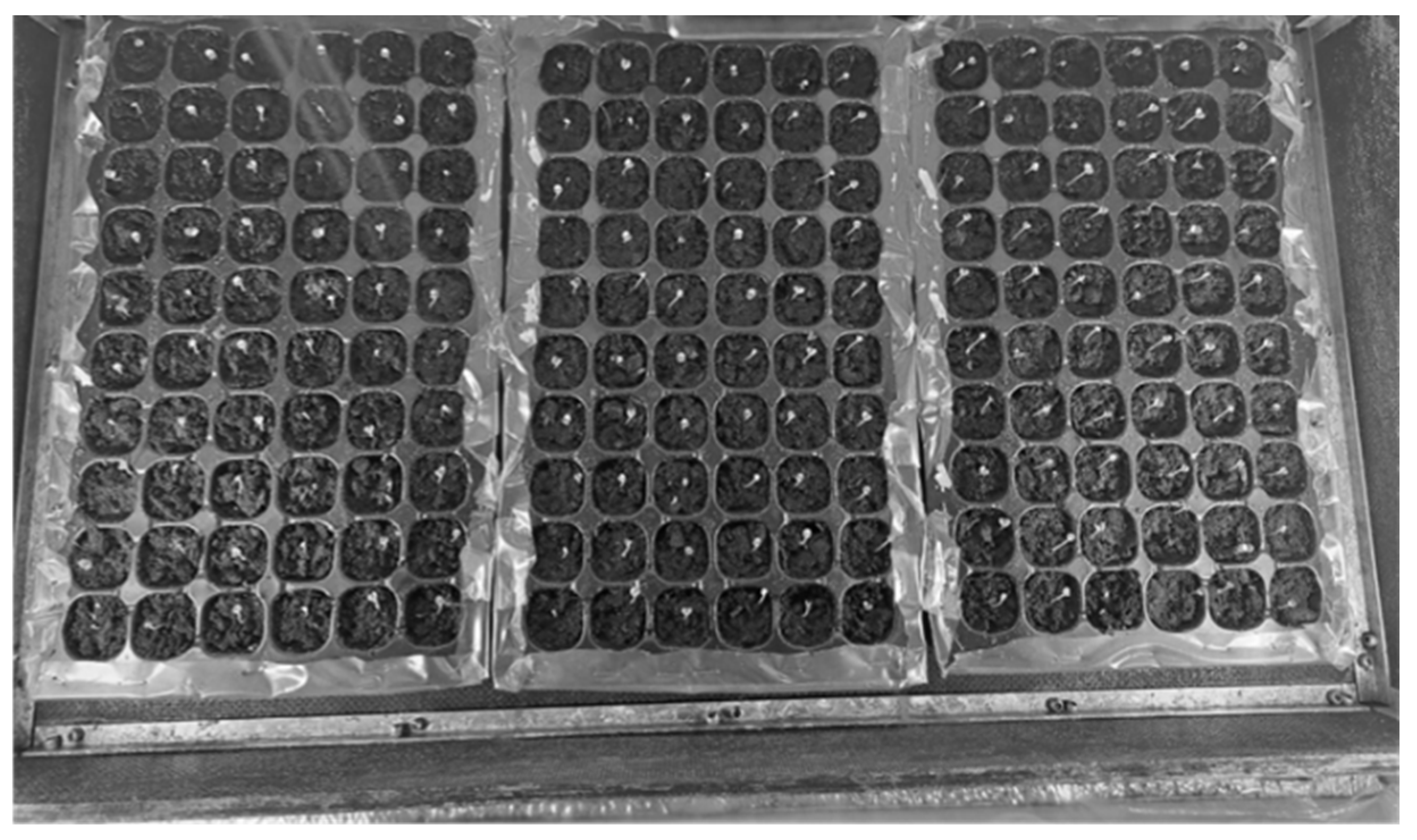
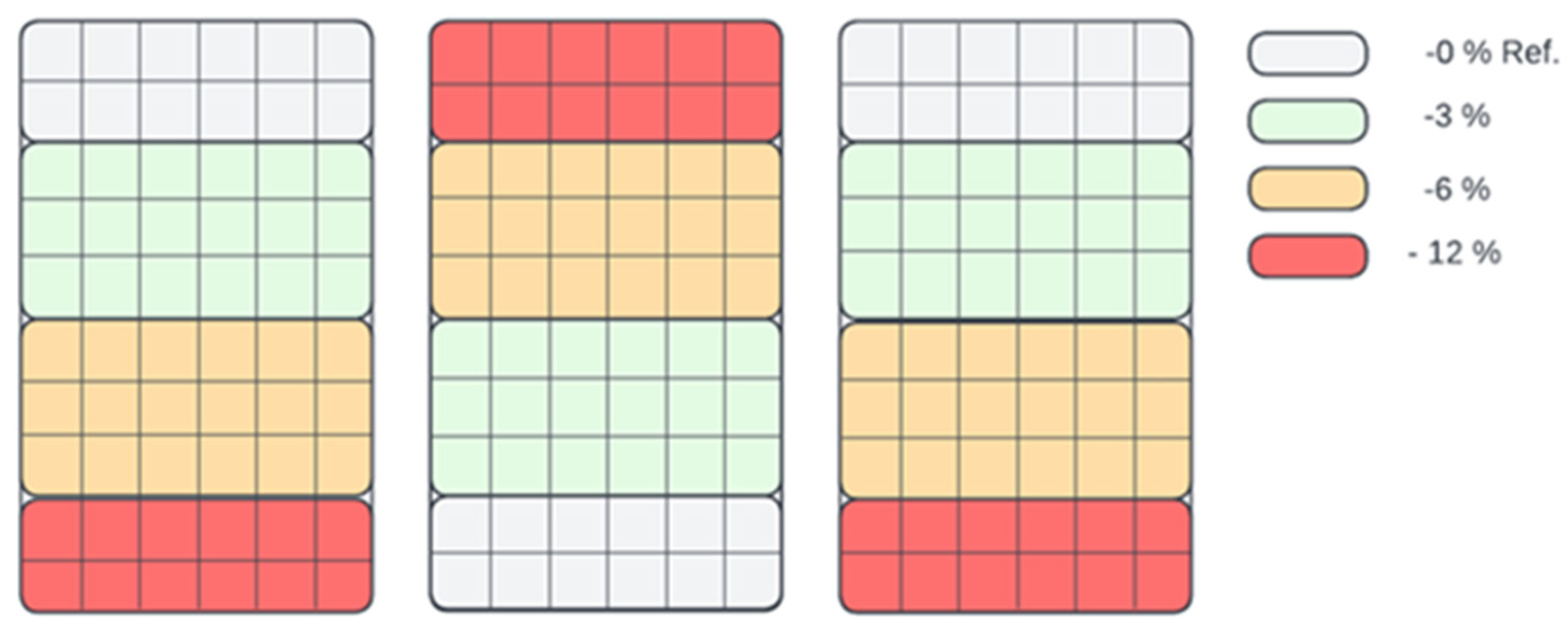
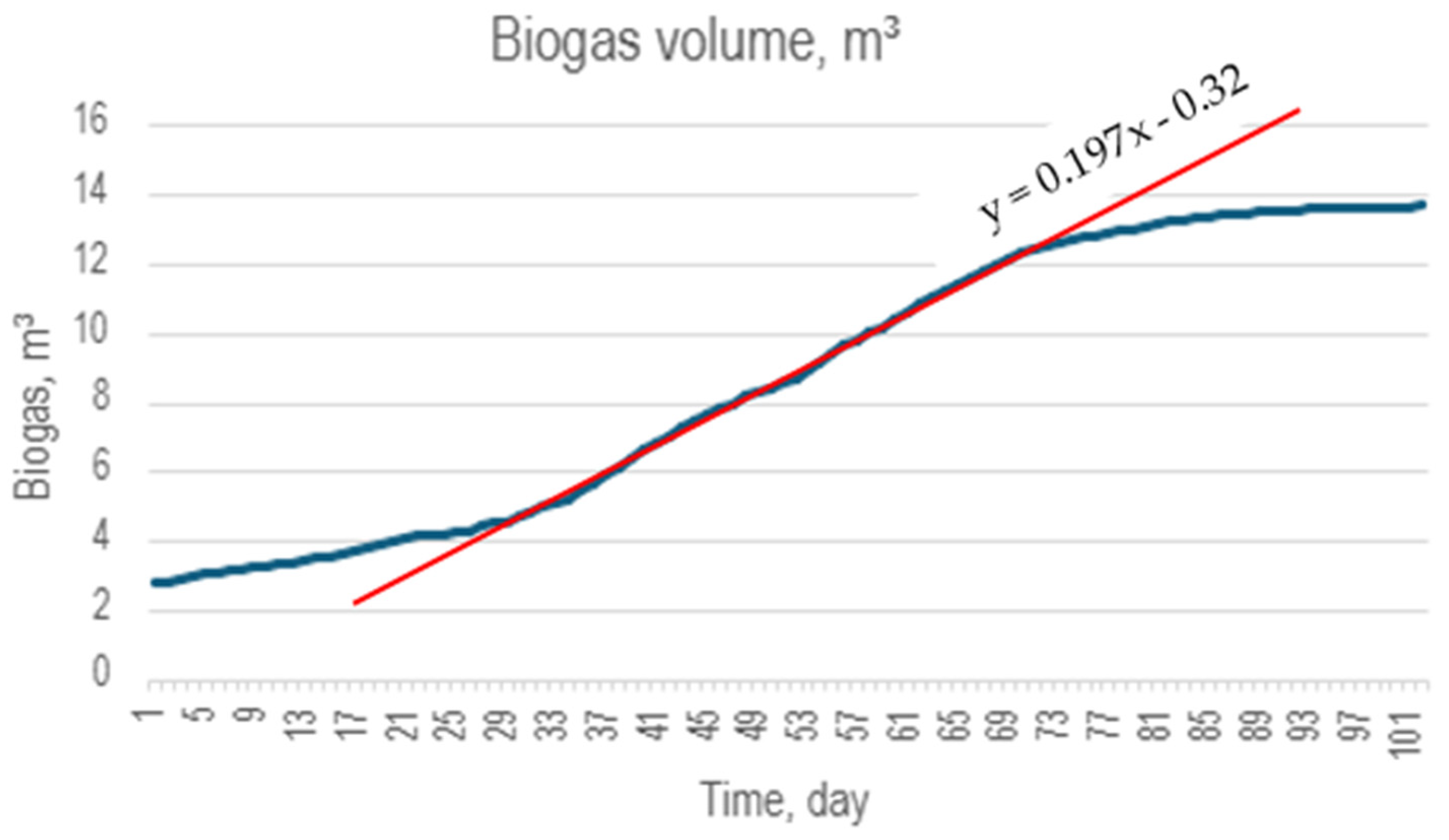

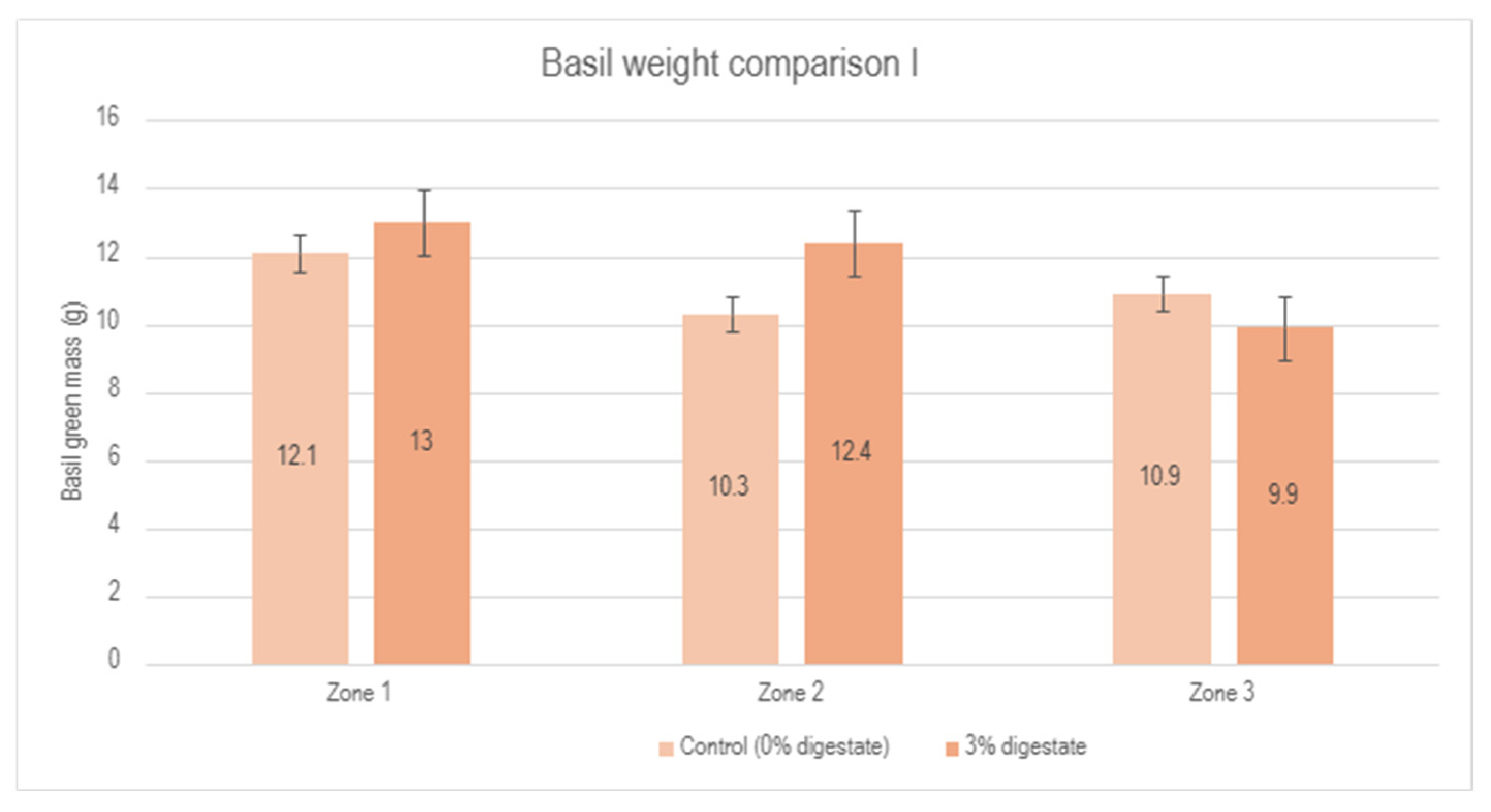


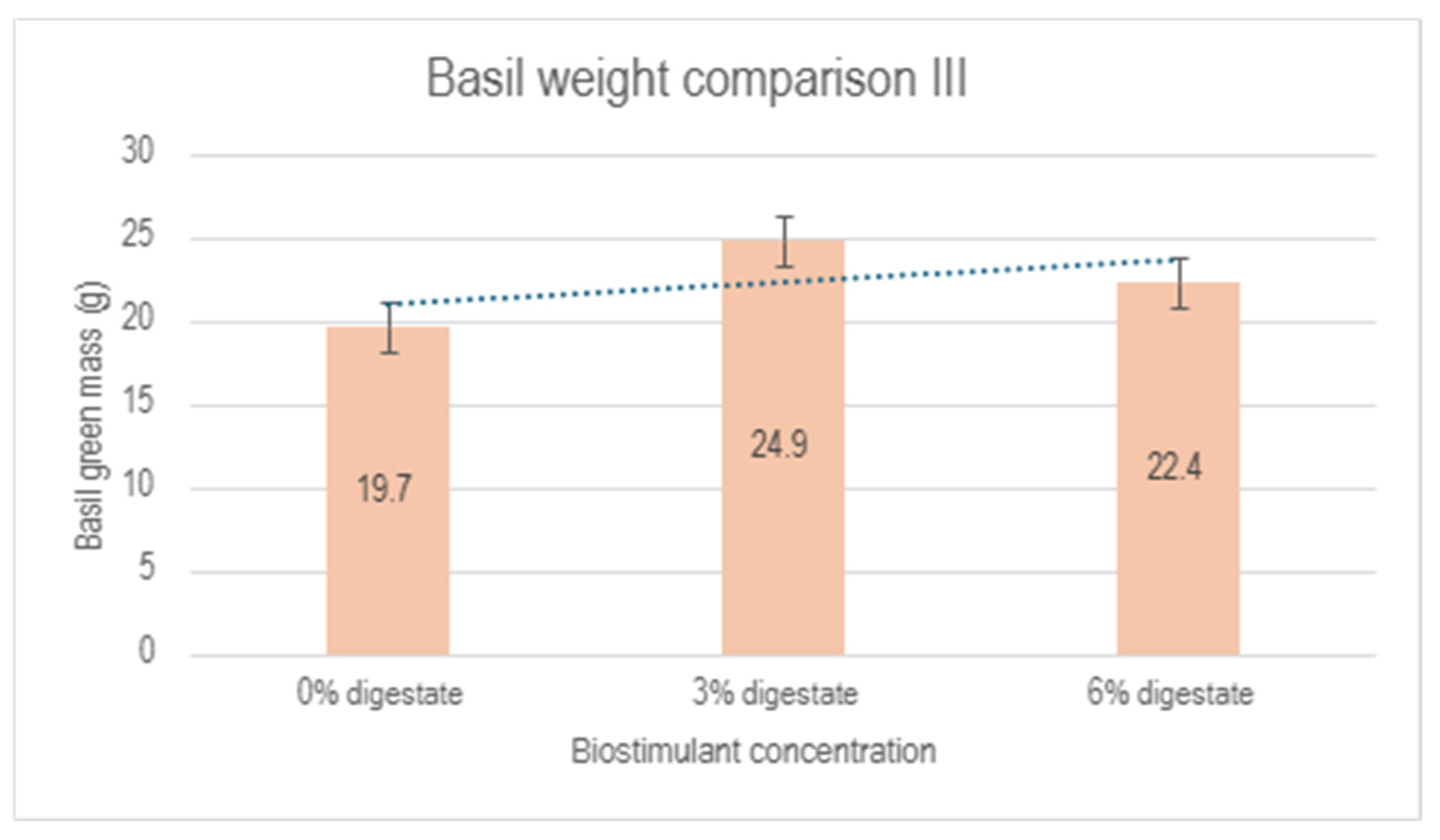
| Challenge Category | Descriptions | Potential Benefits |
|---|---|---|
| Technological aspects | Optimisation of extraction and formulation is needed to ensure consistency and efficiency. Scalability of production processes. | Improving crop productivity and stress tolerance. |
| Variations in efficiency | Effectiveness varies according to crop type, environmental conditions and application methods; further research is needed for optimisation. | Adapting biostimulants to specific crops and conditions. |
| Economic viability | Production and application costs must be competitive with traditional tools. | Potential long-term reduction of agricultural costs |
| Lack of scientific understanding | Incomplete understanding of precise mechanisms of action; uncertain long-term effects on soil and ecosystem. | Developing more effective biostimulants based on new knowledge. |
| Regulatory framework | Different regulations in different regions; EU Fertilisers Regulation 2019/1009 provides a framework, but compliance processes are complex. | Promoting market development using common framework |
| Crop | Average Gross Margin 2018–2023 (EUR/ha) | Projected Increase (%) | Potential Gross Margin (EUR/ha) | Difference (EUR/ha) |
|---|---|---|---|---|
| Winter wheat | 408.83 | 10–15 | 449.71–470.15 | 40.88–61.32 |
| Spring wheat | 321.17 | 10–15 | 353.29–369.34 | 32.12–48.17 |
| Rapeseed | 535.83 | 15–20 | 616.20–643.00 | 80.37–107.17 |
| Potatoes | 2380.83 | 15–20 | 2737.95–2857.00 | 357.12–476.17 |
| Oats | 225.00 | 8–12 | 243.00–252.00 | 18.00–27.00 |
| Buckwheat | 360.50 | 8–12 | 389.34–403.76 | 28.84–43.26 |
| Seaweed Extract | Main Ingredients | Amount in Extract | Key Benefits |
|---|---|---|---|
| Kelp Extract (Laminaria spp., Pterygophora californica and Eisenia arborea) | Auxins, Cytokinins, Polyamines, Phlorotannins | Auxins: 11 mg/L, Cytokinins: 0.03 mg/L | Stimulates root development, increases yield |
| Ascophyllum Nodosum Extract (Ascophyllum nodosum) | Glycine betaine, Aminovaleric acid betaine, Fucoidan | Glycine betaine: 50 mg/g dry matter | Promotes growth, increases stress tolerance |
| Sargassum Extract (Sargassum fusiforme and Sargassum spinuligerum) | Flavonoids, Phenols, Triterpenoids | Flavonoids: 57 µg/mL | Enhances the immune response in plants |
| Chlorella Extract (Chlorella vulgaris) | Carotenoids, Chlorophyll, Amino acids | Carotenoids: 10–20 mg/L | Promotes growth and nutritional value |
| Spirulina Extract (Spirulina maxima and Spirulina platensis) | Phycocyanin, Carotenoids, Amino acids | Phycocyanin: 1–4 mg/L | Promotes growth and nutrient intake |
| Determined Indicator | Measurement | Sample 1 | Sample 2 | Result Uncertainty | Testing Method |
|---|---|---|---|---|---|
| Environmental reaction, pH (KCl) | pH units | 5.4 | 5.6 | 0.2 | ISO 10390:2021 [45] |
| Organic matter content in dry mass | % | 47.5 | - | 2.4 | LVS EN 13039:2012 [46] |
| Dry matter | % | 2.07 | 1.87 | 0.10 | LVS EN 13040:2008 [47] |
| Total nitrogen in naturally moist sample mass | % | 0.026 | 0.091 | 0.01 | LVS EN 13654-1:2003 [48] |
| Total phosphorus (P2O5) in naturally moist sample mass | % | 0.235 | 0.020 | 0.003 | LVS 398:2002 [49] |
| Total potassium (K2O) in naturally moist sample mass | % | 0.230 | 0.110 | 0.019 | LVS ISO 11466:1995 [50] |
| Calcium (Ca) in naturally moist sample mass | % | - | 1.68 | 0.13 | LVS ISO 11466:1995 LVS EN ISO 7980:2000 [51] |
| Magnesium (Mg) in naturally moist sample mass | mg/kg | - | 0.049 | 0.004 | LVS ISO 11466:1995 LVS EN ISO 7980:2000 [51] |
| Manganese (Mn) in naturally moist sample mass | mg/kg | - | 8.05 | 0.72 | LVS ISO 11047:1998 A [52] |
| Iron (Fe) in naturally moist sample mass | mg/kg | - | 19.3 | 1.5 | LVS ISO 11466:1995 Stand.Meth.3111B:2017 [53] |
| Country | Algae Species | Average algae Biomass (t/Year) | Current Use (t/Year) | Potential for Use | Economic Value (EUR Million/Year) |
|---|---|---|---|---|---|
| Estonia | Furcellaria lumbricalis | 150,000 | Furcellaran production (2000 t/year) | Biostimulants, food additives | 15–20 |
| Latvia | Furcellaria lumbricalis | 20,000–30,000 | Washed algae collection (500 t/year) | Biostimulants, biorefining | 2–3 |
| Poland | Furcellaria lumbricalis | <1000 | No data | Restoration potential, ecosystem services | 0.1–0.5 |
| Sweden | Furcellaria lumbricalis | 5000–10,000 | Experimental use (for research) | Sustainable management, biostimulants | 1–2 |
| Finland | Fucus vesiculosus, Ulva spp. | 50,000–70,000 | Experimental (100 t/year for research) | Research and development, bioactive compounds | 5–7 |
| Germany | Zostera marina, Fucus spp. | 10,000–15,000 | Limited (200 t/year for coastal protection) | Research and development, ecosystem services | 1–1.5 |
| Aspect | Description | Reported Effectiveness |
|---|---|---|
| Application methods | Seed treatment: soaking in algae extract solutions before sowing | Improves germination by 20–30% |
| Foliar treatment: spraying extracts on the leaves of the plant | Increases photosynthetic rate by ~75% | |
| Soil treatment: incorporation of extracts or biomass into the soil | Enhances soil structure and microbial activity | |
| Hydroponic cultivation: adding extracts to the nutrient solution | Accelerates plant growth by 15–25% | |
| Forms of application | Liquid extracts | Easily absorbed, fast-acting |
| Powdered extracts | Longer lasting, easy to store | |
| Granulated products | Even distribution in the soil | |
| Live algae cells | Long-lasting, improves soil structure | |
| Optimisation aspects | Timing and frequency of application depending on crop and growth stage | Optimum effectiveness when applied 3–7 times per season |
| Adjusting the concentration to the crop and conditions | Usually effective concentrations in the range of 0.2–2% | |
| Combination with other biostimulants or fertilisers | Synergistic effect, allowing a 30–50% reduction in chemical fertilisers |
Disclaimer/Publisher’s Note: The statements, opinions and data contained in all publications are solely those of the individual author(s) and contributor(s) and not of MDPI and/or the editor(s). MDPI and/or the editor(s) disclaim responsibility for any injury to people or property resulting from any ideas, methods, instructions or products referred to in the content. |
© 2025 by the authors. Licensee MDPI, Basel, Switzerland. This article is an open access article distributed under the terms and conditions of the Creative Commons Attribution (CC BY) license (https://creativecommons.org/licenses/by/4.0/).
Share and Cite
Skapste, I.; Grinberga-Zalite, G.; Žaimis, U. Economic Potential of Algae Biostimulant for Sustainable Agriculture in the Baltic Sea Region: Impact of Furcellaria lumbricalis Digestate Extract on Basil Growth Promotion. Sustainability 2025, 17, 3268. https://doi.org/10.3390/su17073268
Skapste I, Grinberga-Zalite G, Žaimis U. Economic Potential of Algae Biostimulant for Sustainable Agriculture in the Baltic Sea Region: Impact of Furcellaria lumbricalis Digestate Extract on Basil Growth Promotion. Sustainability. 2025; 17(7):3268. https://doi.org/10.3390/su17073268
Chicago/Turabian StyleSkapste, Inese, Gunta Grinberga-Zalite, and Uldis Žaimis. 2025. "Economic Potential of Algae Biostimulant for Sustainable Agriculture in the Baltic Sea Region: Impact of Furcellaria lumbricalis Digestate Extract on Basil Growth Promotion" Sustainability 17, no. 7: 3268. https://doi.org/10.3390/su17073268
APA StyleSkapste, I., Grinberga-Zalite, G., & Žaimis, U. (2025). Economic Potential of Algae Biostimulant for Sustainable Agriculture in the Baltic Sea Region: Impact of Furcellaria lumbricalis Digestate Extract on Basil Growth Promotion. Sustainability, 17(7), 3268. https://doi.org/10.3390/su17073268







